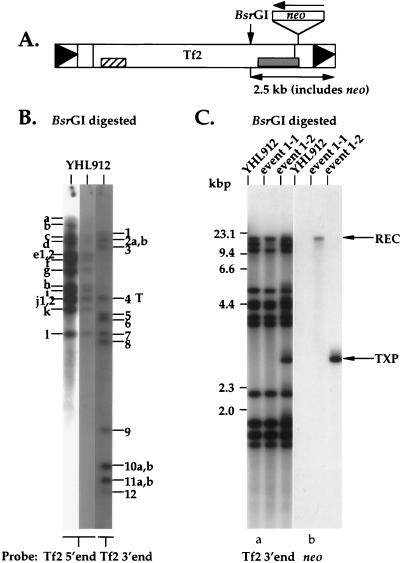FIG. 5.
DNA blot analysis of Tf2-neo and Tf2INFS-neo mobilization candidates: identification of putative transposition events. (A) Map of Tf2-neo depicting the BsrGI site and 5′-end and 3′-end probes. Hatched box, 5′-end probe; dark box, 3′-end probe. The neo probe encompasses the entire neo gene (open box). (B) DNA blot analysis of parent strain YHL912, using Tf2 probes. YHL912 was digested with BsrGI and hybridized with 32P-labeled Tf2 5′-end probe (lanes 1 and 2) or 3′-end probe (lane 3). Hybridizing bands in the blot probed with the 5′-end probe are assigned letters a to l, with numbers being used when doublets are present. Hybridizing bands in the blot probed with the 3′-end probe are assigned numbers 1 to 12, with letters being used when doublets are present. T, tandem band (see the legend to Fig. 4). (C) DNA blot analysis comparing YHL912 and two Tf2-neo mobilization events, using the Tf2 3′-end probe (a) or the neo probe (b). Event 1-1 has been identified as a recombination event (REC) because it shifts an endogenous band (band 2a or b); event 1-2 has been identified as a possible transposition event (TXP) because it generates a new band with no shifts. The neo probe hybridized to the same bands.

